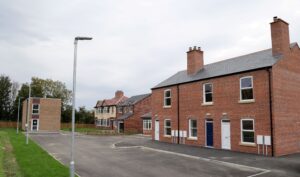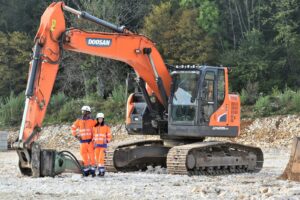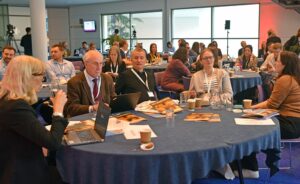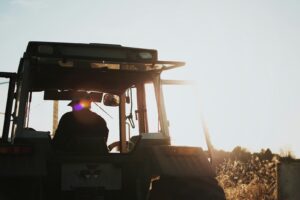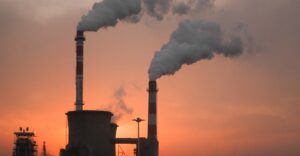The Dorset seaside town is playing host to habitat and sustainability work that could provide a model for other blue spaces and coastal waters
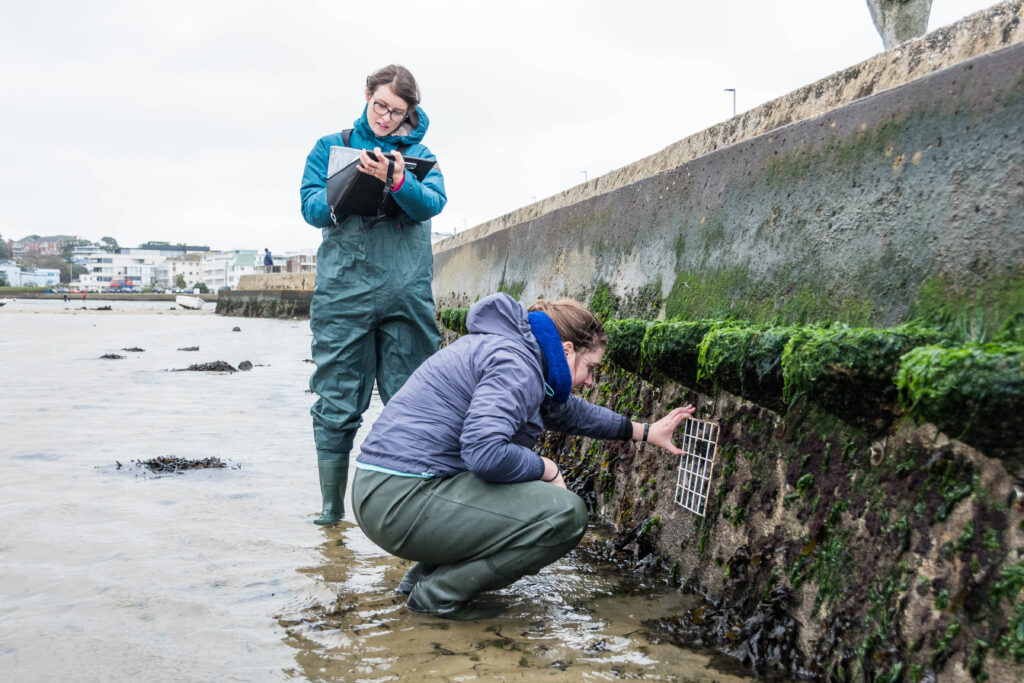
Carbon Kapture, a climate-focused startup, is spearheading one of the initiatives. The company, which specialises in the removal of carbon from the atmosphere, is launching its first ever seaweed farm at Mulroy Bay.
Working with shellfish farmers in Ireland, where the crop is being cultivated, it’s hoped that by the end of 2023 the area this development covers will be larger than Amazon’s North Sea Farm 1. Overall, the seaweed farm is scalable up to 250 hectares, at which point it would be one of the largest in the world, with the ability to grow around 11,000tonnes of crop annually.
The concept works by using ropes to cultivate seaweed, which absorbs carbon dioxide (CO2) from the water itself. This can then be converted into biochar, a stable form of CO2 that has been used in farming for millennia. The product can be spread on land to enrich soil, reducing the need for fertiliser. Additionally, while growing the seaweed will create a welcoming habitat for marine life, helping to support and improve biodiversity in the area.
‘Our partnership with shellfish farmers is a game-changer for the industry and for the fight against climate change,’ said Howard Gunstock, of Carbon Kapture. ‘We are able to produce large quantities of seaweed using a sustainable and eco-friendly process, and turn that seaweed into biochar that can be used to improve soil quality and lock away the carbon for hundreds of years.’
‘The most exciting aspect of this model, is the potential for exponential growth,’ added Paul Rees, Chief Revenue Officer at Carbon Kapture. ‘It takes us a matter of months to create a new Carbon Kapture partnership farm. Given the right interest levels, we aim to establish a global network of 200 farms over the next 10 years, which could capture over 364,000 tonnes of CO₂ per year. We are interested in speaking with companies that wish to distinguish their net zero plans from their competitors. To achieve our growth plans, we are actively looking to build relationships with shellfish and seaweed farmers across the world.’
Meanwhile, Poole’s harbour walls now house a series of artificial concrete rockpools, which are bolted on to the portside. The idea is to test if this could be an appropriate method of improving coastal ecosystems, helping nature take hold even in locations that have historically been considered too busy for species to thrive. A similar scheme is also underway on the Isle of Wight.
Driven by researchers at Bournemouth University, in total 114 artificial pools, based on the design of a common bathroom sink have now been installed at three separate sites. Monitoring began in 2020, meaning the team now has three years of observations to ascertain how successful this approach has been. Currently, 65 individual species have been seen making use of the seawall installations at Sandbanks, including a rare protected native oyster, Ostrea edulis. Crabs, barnacles, molluscs, small fish, sea squirts and some 25 types of seaweed have also been found. This compares to 40 species that are known to rely on whatever cracks and crevices ‘naturally’ exist in the harbourside.
Biomass is also a key goal of the project – essentially, the combined weight of all living things inside the rock pools, predominantly driven y larger specimens of seaweed. The larger the biomass, the more carbon is being removed from the atmosphere and excess nutrients taken from the water. The latter is a particular problem in Poole, leading to low water oxygen levels, making it harder for some species to thrive, or even survive.
More on marine sustainability and biochar:
https://environmentjournal.online/climate-change/uk-councils-wanted-soil-carbon-capture/https://environmentjournal.online/headlines/historic-high-seas-treaty-agreement-reached-after-decades-of-negotiations/https://environmentjournal.online/headlines/77m-competition-launched-to-find-net-zero-maritime-technology/https://environmentjournal.online/environment/uk-falling-behind-ambitions-to-protect-30-of-land-and-sea/
https://environmentjournal.online/headlines/historic-high-seas-treaty-agreement-reached-after-decades-of-negotiations/
https://environmentjournal.online/headlines/historic-high-seas-treaty-agreement-reached-after-decades-of-negotiations/
https://environmentjournal.online/headlines/77m-competition-launched-to-find-net-zero-maritime-technology/https://environmentjournal.online/environment/uk-falling-behind-ambitions-to-protect-30-of-land-and-sea/
https://environmentjournal.online/headlines/historic-high-seas-treaty-agreement-reached-after-decades-of-negotiations/
Image: Bournemouth University











